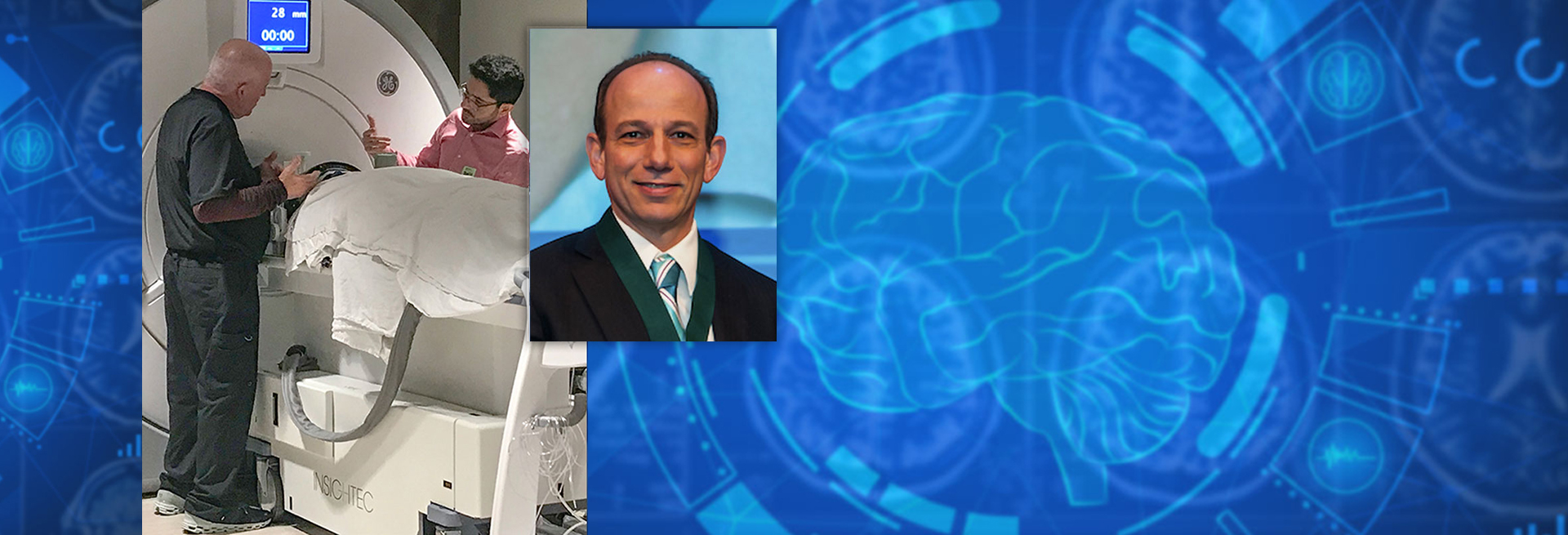By Judy Gelman Myers
Though scientists have known for decades that ultrasound waves can be used for medical purposes, recent technological advances have brought ultrasound to the forefront of medical innovation. Clinicians, engineers and researchers are now using MRI to guide focused ultrasound waves in the treatment of various brain disorders — including Alzheimer’s and Parkinson’s disease, essential tremor, neuropathic pain and even brain cancer.
Florida Atlantic is part of this medical breakthrough, entering a new phase of its longstanding collaboration with Insightec, a pioneer in focused ultrasound. The two institutions have signed a Memorandum of Understanding to advance academic research in the area. Insightec will provide the ultrasound technology; Florida Atlantic will provide the MRI and clinical research.
“Ultrasound has the potential to be a gamechanger. We’re incredibly excited to be partnering with Insightec,” said Gregg Fields, Ph.D., interim vice president for research, who will oversee clinical research for the Florida Atlantic/Insightec collaboration. Fields is the principal investigator on a State of Florida grant that applies magnetic resonance-guided ultrasound to treat Alzheimer’s disease patients and develops approaches to monitor the effectiveness of ultrasound treatments using blood drawn from patients.
Scientists are finding numerous ways to use ultrasound. In general, the waves, typically guided by MRI, are focused on areas of the brain that cause a problem. They are then manipulated for different purposes: to noninvasively excise problematic tissue by causing a lesion; to disrupt dysfunctional processing; or to change the spatial configuration of nearby cells.
For instance, studies have shown that essential tremor — uncontrolled shaking of the hands, head or voice — can be alleviated by focusing thousands of high intensity ultrasound waves on a tiny region in the thalamus, an egg-shaped structure in the middle of the brain that relays motor and sensory information from the body to the brain. The focused waves create a tiny lesion, eliminating the tissue responsible for the tremor. Research has shown that the procedure is also effective for tremor deriving from Parkinson’s disease.
Scientists have also successfully used the technique to treat obsessive-compulsive disorder. In this case, ultrasound waves eliminate tissue in an area of the brain called the internal capsule, which transmits nearly all the information into and out of the cerebral cortex — home to reasoning, decision-making, emotion and personality.
“If you can improve drug delivery to the brain, you’d address a great variety of other neurological disorders, including brain cancer.”
– Gregg Fields, Ph.D.,
But perhaps the most significant use of ultrasound lies in its potential to disrupt the blood-brain barrier (BBB). The BBB is a powerful evolutionary tool that first emerged 400 million years ago to protect the brain from toxins in the bloodstream. It comprises a lining of tightly packed cells in the brain’s blood vessels, which let necessary chemical molecules in and keep bacteria and viruses out. The BBB also keeps out many life-saving medications that are too large to pass through it, including two new FDA approved antibodies that reduce the plaque prevalent in Alzheimer’s disease.
Florida Atlantic, in collaboration with Insightec and Delray Medical Center, is currently conducting the first phase of clinical trials evaluating the safety of a technique that uses low-intensity ultrasound waves to open the BBB, led by Fields, who is also executive director of Florida Atlantic’s Institute for Human Health and Disease Intervention. With this technique, gas-filled microbubbles are injected in the bloodstream near the BBB. Ultrasound waves are focused on the microbubbles to make the gas expand. As the bubbles get bigger, they loosen the proteins keeping the BBB intact, opening a space large enough to permit the antibodies to enter. When the ultrasound is turned off, the bubbles contract and the BBB returns to its normal state. Previous attempts to open the BBB failed because the opening was too big and stayed open too long. Here the opening is temporary and targeted to specific areas of the brain.
Fields said he sees applications for the microbubbles beyond treating Alzheimer’s disease. “If you can improve drug delivery to the brain, you’d address a great variety of other neurological disorders, including brain cancer.”
Florida Atlantic’s MRI is about to become fully functional. That capability could position the university to be the primary research site for Insightec. As summarized by Fields, “The application of low-intensity, focused ultrasound could provide the breakthrough needed to more effectively treat conditions that previously had poor clinical outcomes. The partnership between Florida Atlantic and Insightec brings this cutting-edge technology home to residents of South Florida.”
